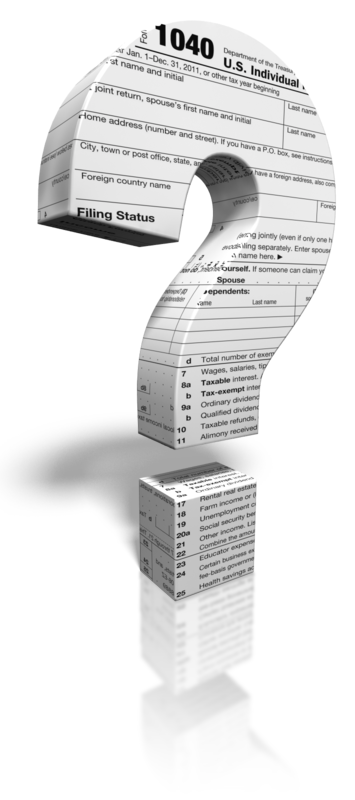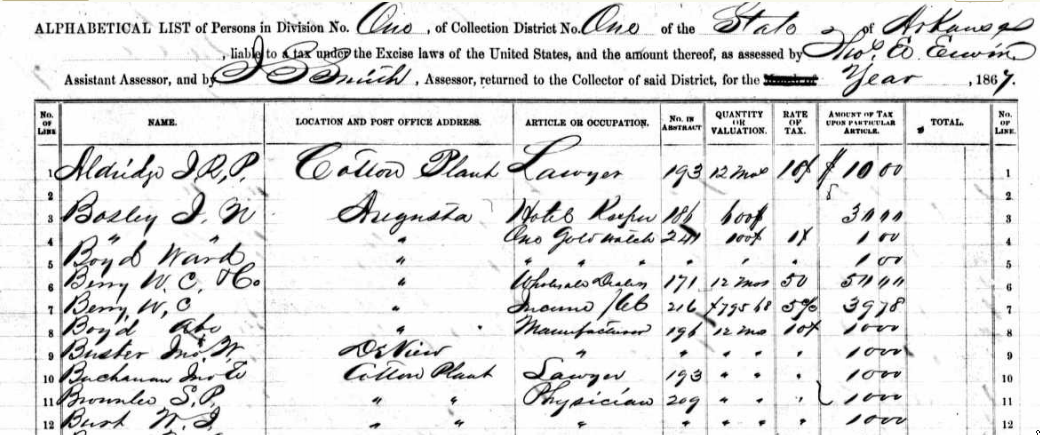It’s time to pay taxes in the United States!  Is it any consolation that our ancestors paid them, too? Here’s a brief history of U.S. federal taxation and tips on where to find tax records for the U.S. and the U.K.
Is it any consolation that our ancestors paid them, too? Here’s a brief history of U.S. federal taxation and tips on where to find tax records for the U.S. and the U.K.
According to the National Archives (U.S.), the Civil War prompted the first national income tax, a flat 3% on incomes over $800. (See an image of the 16th Amendment and the first 1040 form here.) The Supreme Court halted a later attempt by Congress to levy another income tax, saying it was unconstitutional. In 1913 the 16th Amendment granted that power. Even then, only 1% of the population paid income taxes because most folks met the exemptions and deductions. Tax rates varied from 1% to 6%–wouldn’t we love to see those rates now!
Ancestry.com has indexed images of U.S. federal tax assessment lists from the Civil War period (and beyond, for some territories). Here’s a sample image from Arkansas:
Of course, the U.S. federal income tax is just one type. Taxes have been levied on real estate, personal property and income by local, regional and national governments throughout the world.
Some tax records are online. Ancestry.com hosts tax records from London (1692-1932); the U.S. states of Pennsylvania, Tennessee, New York, Ohio, Georgia and Texas; and many from Scotland, Ireland, Canada and Russia (there’s more: see a full list and descriptions here). FamilySearch.org hosts over a million records each of U.S. state tax records from Ohio and Texas. FindMyPast hosts a wealth of U.K. tax records, from local rate books to Cheshire land taxes and even the Northamptonshire Hearth Tax of 1674.
In the U.S., look for original real estate and personal property taxpayer lists in county courthouses or state archives. Consult genealogical or historical organizations and guides. Or Google them! A Google search for “tax records genealogy Virginia” brings up great results from the Library of Virginia and Binns Genealogy. (Use the keyword “genealogy” so historical records will pop up. Without that term, you’re going to get results that talk about paying taxes today.)
I’ll leave you with this tantalizing list of data gathered in the Calhoun County, Georgia tax list of 1873: first, it enumerates whites, children, the blind/deaf/dumb, dentists, auctioneers, and those who have ten-pin alleys, pool tables and skating rinks. Then, real estate is assessed in detail. Finally, each person’s amount of money, investments, merchandise, household furniture, and investment in manufacturing is assessed.
As you can see, it can pay you big to invest time in looking for your ancestor’s tax records! Just make sure that if you’re here in the U.S., you’ve got your own taxes out of the way before you go searching for someone else’s.
 Like this post? Look around on the Genealogy Gems website! We have lots more free content to offer, including our flagship Genealogy Gems podcast, an online radio show that brings you the best “gems” in genealogy how-tos, inspiration and fun. We have more than 1.5 million downloads worldwide: listen and you’ll see why!
Like this post? Look around on the Genealogy Gems website! We have lots more free content to offer, including our flagship Genealogy Gems podcast, an online radio show that brings you the best “gems” in genealogy how-tos, inspiration and fun. We have more than 1.5 million downloads worldwide: listen and you’ll see why!





